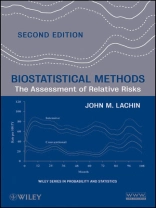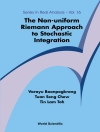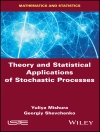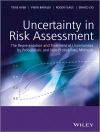Praise for the First Edition
’. . . an excellent textbook . . . an indispensable reference
for biostatisticians and epidemiologists.’
–International Statistical Institute
A new edition of the definitive guide to classical and modern
methods of biostatistics
Biostatistics consists of various quantitative techniques that
are essential to the description and evaluation of relationships
among biologic and medical phenomena. Biostatistical Methods:
The Assessment of Relative Risks, Second Edition develops basic
concepts and derives an expanded array of biostatistical methods
through the application of both classical statistical tools and
more modern likelihood-based theories. With its fluid and balanced
presentation, the book guides readers through the important
statistical methods for the assessment of absolute and relative
risks in epidemiologic studies and clinical trials with
categorical, count, and event-time data.
Presenting a broad scope of coverage and the latest research on
the topic, the author begins with categorical data analysis methods
for cross-sectional, prospective, and retrospective studies of
binary, polychotomous, and ordinal data. Subsequent chapters
present modern model-based approaches that include unconditional
and conditional logistic regression; Poisson and negative binomial
models for count data; and the analysis of event-time data
including the Cox proportional hazards model and its
generalizations. The book now includes an introduction to mixed
models with fixed and random effects as well as expanded methods
for evaluation of sample size and power. Additional new topics
featured in this Second Edition include:
* Establishing equivalence and non-inferiority
* Methods for the analysis of polychotomous and ordinal data,
including matched data and the Kappa agreement index
* Multinomial logistic for polychotomous data and proportional
odds models for ordinal data
* Negative binomial models for count data as an alternative to
the Poisson model
* GEE models for the analysis of longitudinal repeated measures
and multivariate observations
Throughout the book, SAS is utilized to illustrate applications
to numerous real-world examples and case studies. A related website
features all the data used in examples and problem sets along with
the author’s SAS routines.
Biostatistical Methods, Second Edition is an excellent
book for biostatistics courses at the graduate level. It is also an
invaluable reference for biostatisticians, applied statisticians,
and epidemiologists.
Innehållsförteckning
Preface.
Preface to First Edition.
1 Biostatistics and Biomedical Science.
1.1 Statistics and the Scientific Method.
1.2 Biostatistics.
1.3 Natural History of Disease Progression.
1.4 Types of Biomedical Studies.
1.5 Studies of Diabetic Nephropathy.
2 Relative Risk Estimates and Tests for Independent Groups.
2.1 Probability As a Measure of Risk.
2.2 Measures of Relative Risk.
2.3 Large Sample Distribution.
2.4 Sampling Models Likelihoods.
2.5 Exact Inference.
2.6 Large Sample Inferences.
2.7 SAS PROC FREQ.
2.8 Other Measures of Differential Risk.
2.9 Polychotomous and Ordinal Data.
2.10 Two Independent Groups With Polychotomous Response.
2.11 Multiple Independent Groups.
2.12 Problems.
3 Sample Size, Power, and Efficiency.
3.1 Estimation Precision.
3.2 Power of Z-Tests.
3.3 Test for Two Proportions.
3.4 Power of Chi-Square Tests.
3.5 SAS PROC POWER.
3.6 Efficiency.
3.7 Problems.
4 Stratified-Adjusted Analysis for Independent Groups.
4.1 Introduction.
4.2 Mantel-Haenszel Test and Cochran’s Test.
4.3 Stratified-Adjusted Estimators.
4.4 Nature of Covariate Adjustment.
4.5 Multivariate Tests of Hypotheses.
4.6 Tests of Homogeneity.
4.7 Efficient Tests of No Partial Association.
4.8 Asymptotic Relative Efficiency of Competing Tests.
4.9 Maximin-Efficient Robust Tests.
4.10 Random Effects Model.
4.11 Power and Sample Size for Tests of Association.
4.12 Polychotomous and Ordinal Data.
4.13 Problems.
5 Case-Control and Matched Studies.
5.1 Unmatched Case-Control (Retrospective) Sampling.
5.2 Matching.
5.3 Tests of Association for Matched Pairs.
5.4 Measures of Association for Matched Pairs.
5.5 Pair-Matched Retrospective Study.
5.6 Power Function of Mc Nemar’s Test.
5.7 Stratified Analysis of Pair-Matched Tables.
5.8 Multiple Matching-Mantel-Haenszel Analysis.
5.9 Matched Polychotomous Data.
5.10 Kappa Index of Agreement.
5.11 Problems.
6 Applications of Maximum Likelihood and Efficient Scores.
6.1 Binomial.
6.2 2×2 Table: Product Binomial (Unconditionally).
6.3 2×2 Table, Conditionally.
6.4 Score-Based Estimate.
6.5 Stratified Score Analysis of Independent 2×2 Tables.
6.6 Matched Pairs.
6.7 Iterative Maximum Likelihood.
6.8 Problems.
7 Logistic Regression Models.
7.1 Unconditional Logistic Regression Model.
7.2 Interpretation of the Logistic Regression Model.
7.3 Tests of Significance.
7.4 Interactions.
7.5 Measures of the Strength of Association.
7.6 Conditional Logistic Regression Model for Matched Sets.
7.7 Models for Polychotomous or Ordinal Data.
7.8 Random Effects and Mixed Models.
7.9 Models for Multivariate or Repeated Measures.
7.10 Problems.
8 Analysis of Count Data.
8.1 Event Rates and the Homogeneous Poisson Model.
8.2 Over Dispersed Poisson Model.
8.3 Poisson Regression Model.
8.4 Over Dispersed and Robust Poisson Regression.
8.5 Conditional Poisson Regression for Matched Sets.
8.6 Negative Binomial Models.
8.7 Power and Sample Size.
8.8 Multiple Outcomes.
8.9 Problems.
9 Analysis of Event-Time Data.
9.1 Introduction to Survival Analysis.
9.2 Lifetable Construction.
9.3 Family of Weighted Mantel-Haenszel Tests.
9.4 Proportional Hazards Models.
9.5 Evaluation of Sample Size and Power.
9.6 Additional Models.
9.7 Analysis of Recurrent Events.
9.8 Problems.
Appendix Statistical Theory.
A.1 Introduction.
A.2 Central Limit Theorem and the Law of Large Numbers.
A.3 Delta Method.
A.4 Slutsky’s Convergence Theorem.
A.5 Least Squares Estimation.
A.6 Maximum Likelihood Estimation and Efficient Scores.
A.7 Tests of Significance.
A.8 Explained Variation.
A.9 Robust Inference.
A.10 Generalized Linear Models and Quasi-Likelihood.
A.11 Generalized Estimating Equations (GEE).
References.
Author Index.
Subject Index.
Om författaren
John M. Lachin, Sc D, is Co-Director of The Biostatistics Center at The George Washington University, where he also serves as Professor of Biostatistics and Epidemiology, and of Statistics. He has published extensively in his areas of research interest, which include sample size evaluation, group sequential methods, analysis of repeated measures, and survival analysis. A Fellow of the American Statistical Association and the Society for Clinical Trials, Dr. Lachin is the coauthor of Randomization in Clinical Trials: Theory and Practice, also published by Wiley.












